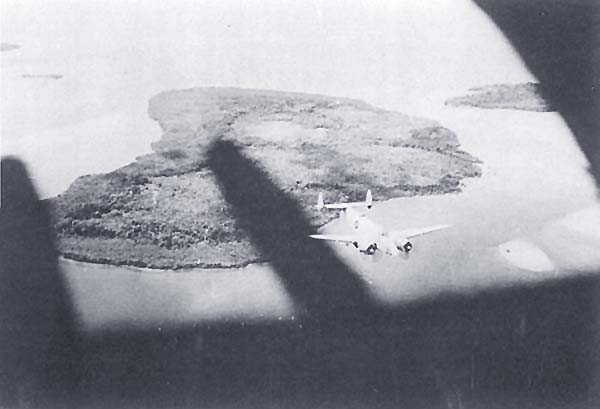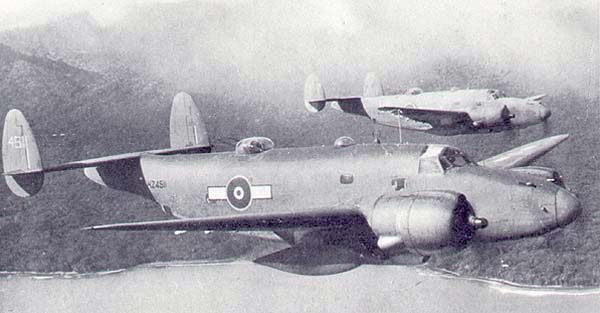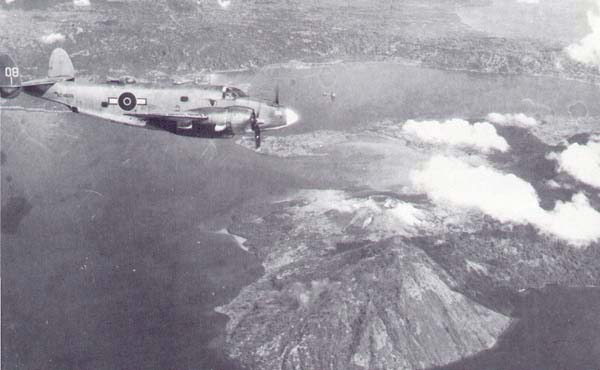
By March 1945, the RNZAF bomber force was gradually being reduced, due to their ground strike duties being able to be carried out by the new breed of fighter bombers such as the F4U-1D Corsairs then in service. Orders placed for further aircraft such as the successor to the PV-1, the PV-2, were cancelled (after 4 PV-2s. were received) and all spare aircraft were returned to New Zealand for storage at Rukuhia.
The last move by the Pacific
Island based squadrons was in June and July when 3 Squadron shifted to
Jacquinot Bay on the East coast of New Britain.
By the Japanese surrender in August, there remained about 30 PV-1 s at Jacquinot Bay, and approximately 57 PV-1s and 22 RB-34s in New Zealand. 4 Squadron returned to New Zealand at this time, and was disbanded. 2 squadron was reformed to
provide metrological flights, aerial surveys and search and rescue missions.
The remaining airworthy Venturas were phased out gradually as they were replaced in 1946 by the DeHavilland Mosquito. The aircraft in storage were sold for scrap in 1948 and almost all were melted down. Those of 2 Squadron were scrapped in 1947/48. The only one of all these aircraft
to survive to the present day is NZ4600, one of the RB-34s! This aircraft
has been restored to display condition and can be found at the Museum Of
Transport And Technology (MOTAT) at Auckland.
|



